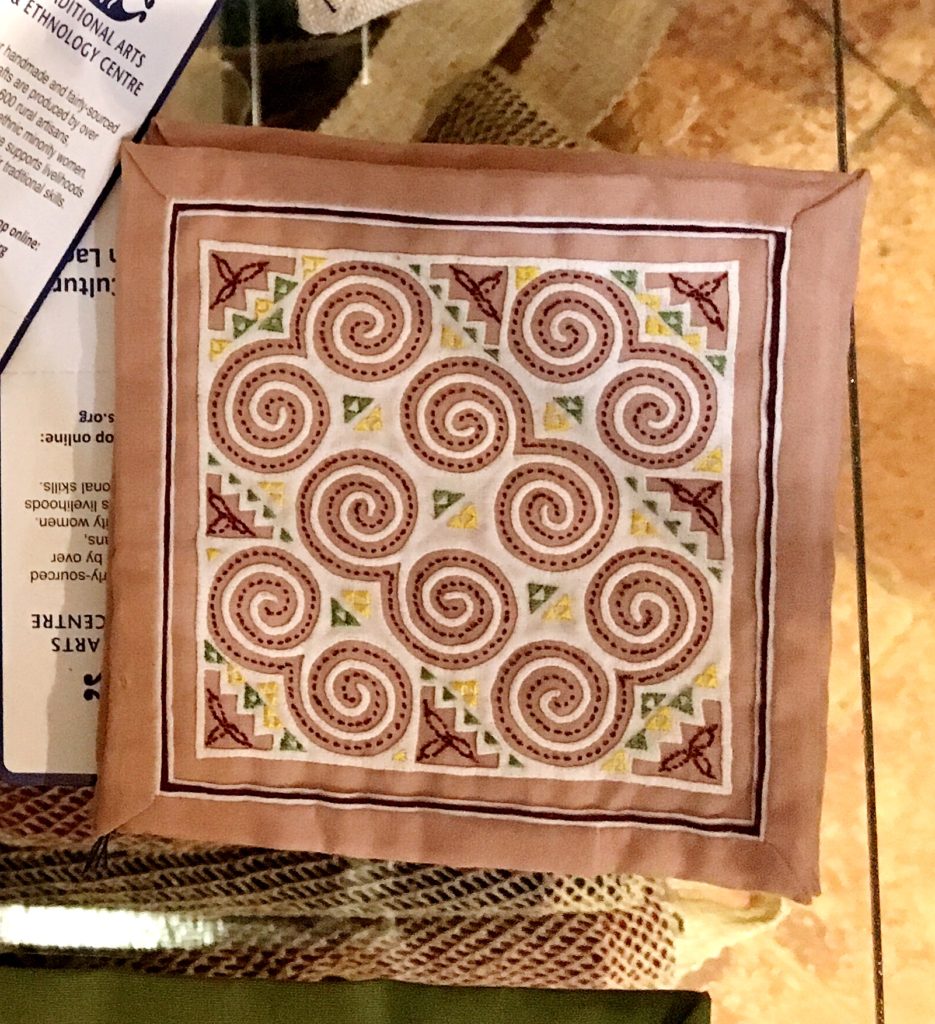
pa·j n·tau·b /pa' n'dau
F L O W E R C L O T H
Paj Ntaub means Flower Cloth.
“Paj” means “Flower” and “Ntaub” means “Cloth.” While the term has generally been translated in the past as traditional Hmong needlework, it’s important to note that some paj ntaub work is done without needles at all — like batik! So it’s better to think of the paj ntaub as a “textile art” in general, referring to art that is made with cloth and thread.
There are a variety of techniques used to make paj ntaub which then decorate skirts, jackets, belts, head wraps, hats, baby carriers, and other items used in everyday life or for special occasions and ceremonies.
Cloth-making
Cloth is the canvas on which paj ntaub is made. In fact, the word “ntaub” which mean “cloth” can also be translated as “paper” or what I like to think of as the canvas for paj ntaub. Although paj ntaub can be made on any type of cloth, the traditional cloth tied to Hmong textile making is hemp.

Grown from the cannabis sativa plant, hemp is an integral part of traditional Hmong life, beliefs, and ceremonies. It’s planted, grown, and processed throughout the year to make raw threads that are then woven into cloth. Often these cloth are 10 to 20-feet long in length, which are then turned into magnificent skirts or simple outfits worn for special occasions.

Batik & Indigo-Dye
Batik is a wax-resist dying technique that is used to create dark-indigo patterned. This technique is done by using a pen tool to pick up melted beeswax to draw complex patterns. When the beeswax has dried, it is then soaked in a vat of dark blue dye made from the indigo plant. After soaking, the cloth is boiled to release the wax and allow for the design to show through. It is a technique traditionally done on hemp but can be used on other natural fibre cloth like cotton and linen.
Embroidery
Hmong embroidery is the star of paj ntaub. There are an array of fine needlework Hmong women across the globe have used throughout time. The most common of which include cross-stitching, chain-stitching, running stitching, and french knots. You will notice more varieties among Hmong-Miao groups in Southwestern China.


Applique
Appliqué is a method of quilting that involves stitching smaller pieces of fabric on top of a larger piece of fabric to create an overall image or design.
Among paj ntaub techniques there is both appliqué and reverse-appliqué that is done to create traditional designs. Reverse-appliqué is a highly-skilled method of quilting that involves cutting out a design on a piece of fabric, where the raw edges are turned under and stitched onto another piece of fabric for the design to show through.